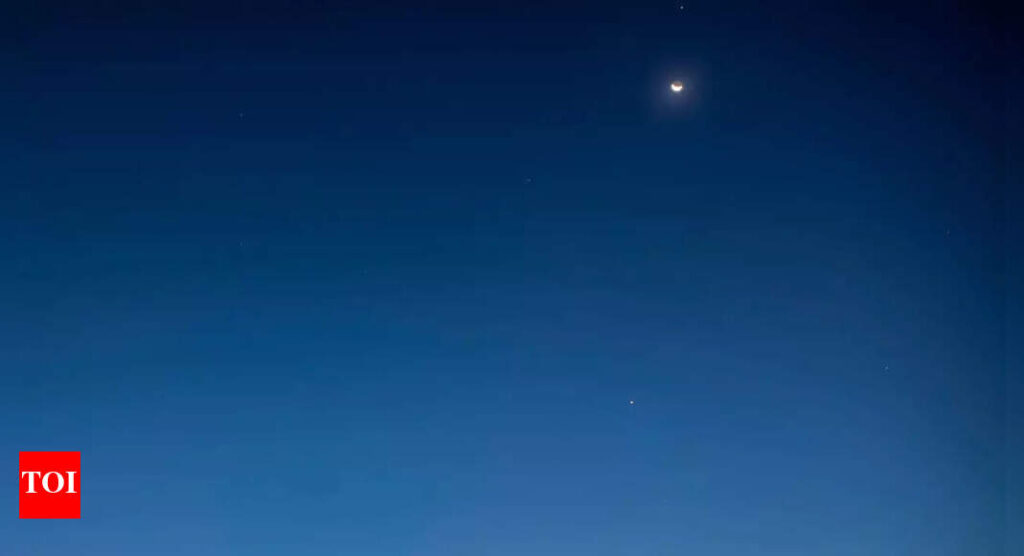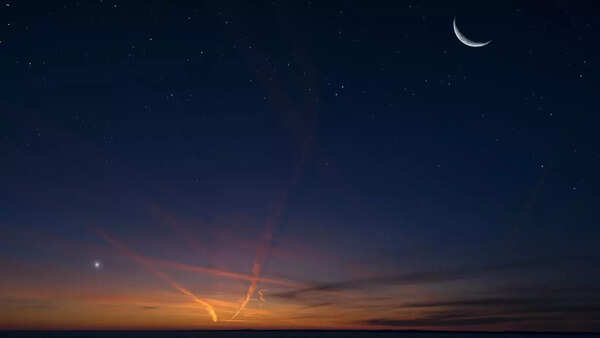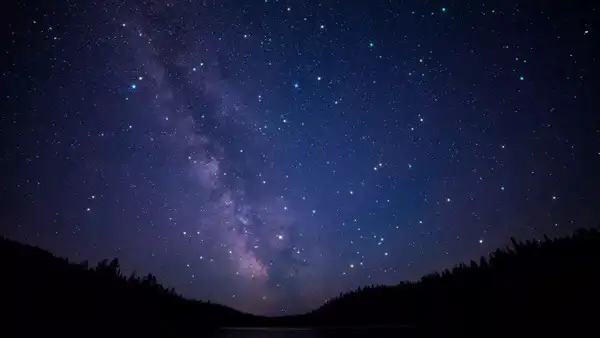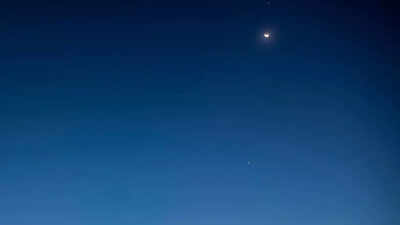Celestial kiss: Moon and Mars to dazzle the night sky on June 29

Skywatchers are in for a breathtaking treat on Sunday, June 29, as the Moon and Mars come into an unusually close conjunction, appearing just 0.2 degrees apart. This rare alignment, often called a “celestial kiss,” will be visible to the naked eye and offers one of the most striking planetary sights of the summer.
Where to look?
Shortly after sunset, look west to catch Mars glowing like a reddish “cherry” perched just above the slender crescent Moon, which will be about 24% illuminated. For observers in some regions of the Pacific and northern South America, the event becomes even more dramatic: the Moon will briefly occult Mars, completely hiding it from view for around an hour.

Representative Image
Even without a telescope, this close encounter will be a dazzling spectacle. Those with binoculars or a small telescope will be able to appreciate the detail and contrast between the glowing Moon and the rust-colored planet. But timing is key — the window to view the conjunction lasts only about 45 minutes after sunset, so an unobstructed western horizon is essential for the best view.
Earthshine and the moving Moon
Adding to the drama is a subtle but beautiful effect known as Earthshine. This ghostly glow on the dark side of the Moon is sunlight reflected off Earth’s surface — oceans, clouds, and ice — back onto the Moon. Best seen during the crescent phase, Earthshine will be particularly noticeable on Saturday and Sunday evenings, giving the Moon a delicate, ethereal glow that enhances the overall experience.After this celestial kiss, the Moon will gradually move away from Mars in the nights that follow. By Monday, June 30, the Moon will be about 33% lit and will form a graceful visual lineup with both Mars and the bright star Regulus. Though not as tightly grouped as the night before, the trio will still make for a lovely display in the early evening sky.

Representative Image
More sky shows ahead
If you miss this weekend’s conjunction, don’t worry — the cosmos has more to offer soon. On August 12, Venus and Jupiter will come within 2.4 degrees of each other just before sunrise. Then, on September 19, Venus and the crescent Moon will pair up again, this time just 0.8 degrees apart, creating another picturesque scene for early risers.








